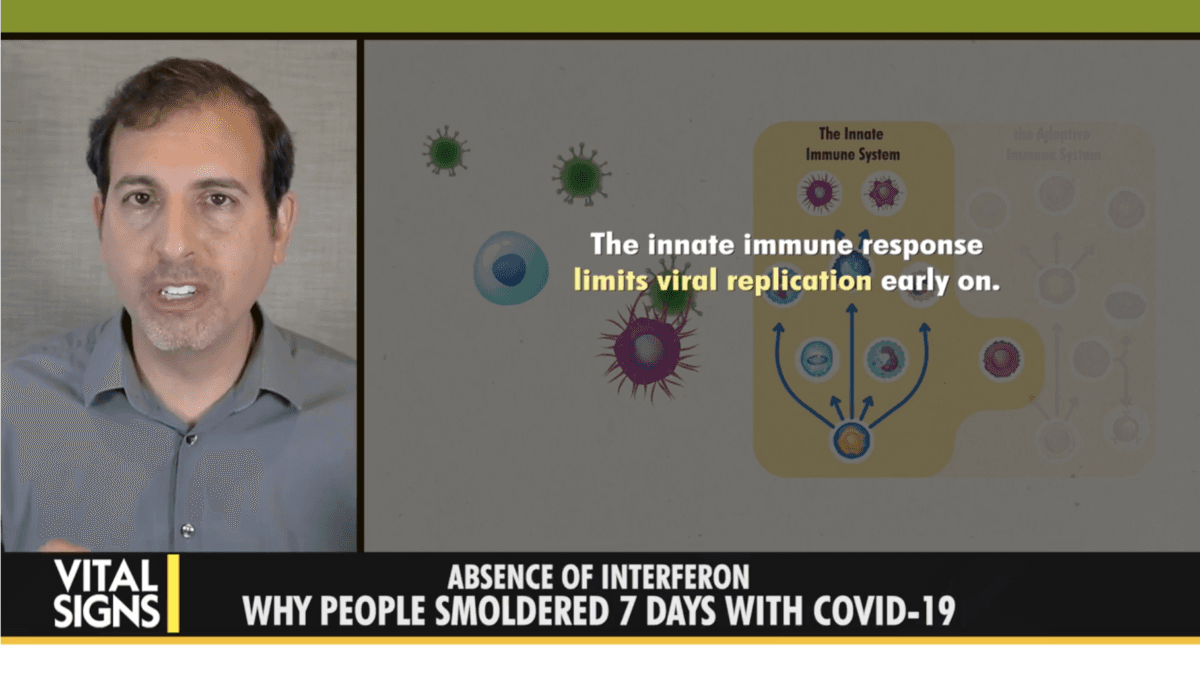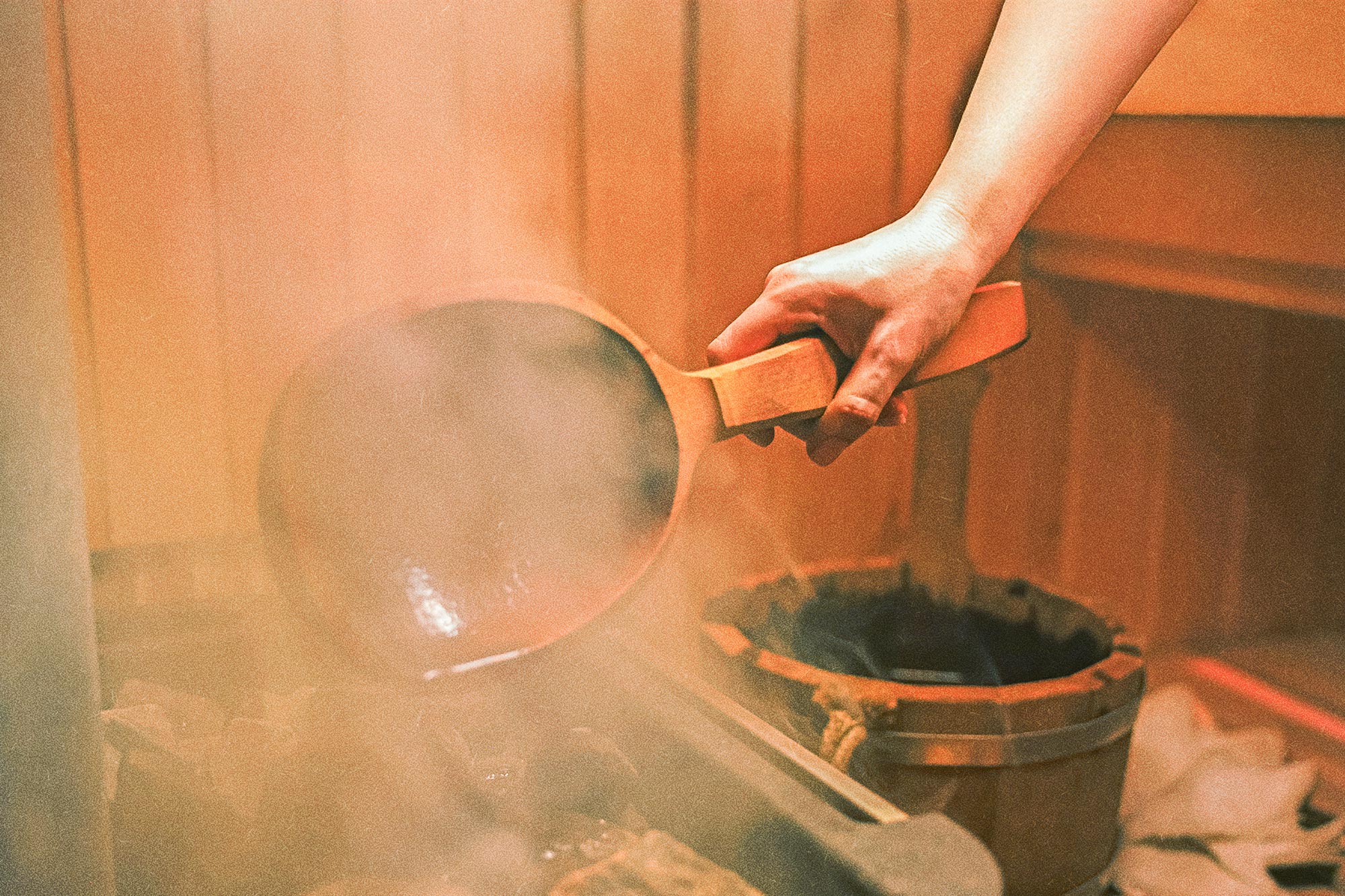During the COVID-19 pandemic, we saw how viruses could cause mild symptoms in some people while leading others to life-threatening complications.
Dr. Roger Seheult, a critical care doctor, highlights the key role of the immune system in tipping the scales toward better outcomes. He explains that fever naturally boosts the production of virus-fighting proteins, particularly interferons, which help limit viral replication early in infection.
But is there a way to get the benefits of a fever before it even spikes?
Seheult joined “Vital Signs” with Brendon Fallon to discuss how methods like sauna or home hydrotherapy are simple but powerful ways to fight viral infection and help prevent symptoms from becoming critical.

Dr. Roger Seheult highlights ways to naturally boost immunity in “<span style="font-weight: 400;"><a href="https://ept.ms/NextBigVirusVS" target="_blank" rel="nofollow noopener">Next Big Virus?</a>“</span> on “<span style="font-weight: 400;"><a href="https://www.theepochtimes.com/epochtv/vital-signs" target="_blank" rel="nofollow noopener">Vital Signs</a>”.</span>
Why Are Viruses Deadly for Some, Mild for Others?
Seheult battled COVID-19 from the frontlines during the pandemic and is quadruple board-certified in internal medicine, pulmonary diseases, critical care medicine, and sleep medicine. He explains how boosting the body’s innate immune system, which is the first line of defense against viral infection, may lessen the severity of the illness. This early immune response involves cells that recognize and attack “non-self” invaders, preventing the virus from multiplying uncontrollably during the critical initial week of infection.
“The innate immune system is these cells that run around that can tell, basically, is this self or is this not self? And if it’s not self, let’s attack it. That’s a very, very important early response to any infection because it’s going to limit the virus’s ability to replicate,” Seheult said. “This has been going on for about seven days.” During this time, the body produces antibodies. These antibodies eventually arrive to help clean up what is left over of the virus. According to Seheult, this is the stage of infection where trouble can occur.
Watch “Next Big Virus” on how to naturally boost immunity.
“If you have a very good initial innate immune response, then the number of antigens that these antibodies have to mop up seven days later is going to be much smaller, and therefore, the immune reaction is going to be much smaller,“ Seheult said. ”If you don’t have a very good innate immune system … there’s going to be so much virus all over the body that this immune reaction is going to cause a cytokine storm. And that’s the real problem." A cytokine storm is an immune system overreaction that causes uncontrolled inflammation. The type of inflammation caused by the adaptive immune response is responsible for many of the problems seen in COVID-19 infection, such as lungs filling with water and people ending up on ventilators, according to Seheult.
“The way to avoid that is an ounce of prevention,” he said. He compares the immune response to fighting a wildfire: The innate immune system acts early, like water to extinguish the fire before it spreads, whereas delaying this response allows the “fire” to grow unchecked, causing widespread damage.

Dr. Roger Seheult explains how the innate immune system works in “<span style="font-weight: 400;"><a href="https://ept.ms/NextBigVirusVS" target="_blank" rel="nofollow noopener">Next Big Virus?</a>“</span> on “<span style="font-weight: 400;"><a href="https://www.theepochtimes.com/epochtv/vital-signs" target="_blank" rel="nofollow noopener">Vital Signs</a>”.</span>
The Benefits of a Fever Without the Fever
More than 100 years ago, an Austrian psychiatrist cured patients of neurosyphilis by infecting them with malaria, which triggered a fever and stimulated the immune system. Seheult highlights that raising the body’s temperature is an effective way to enhance the innate immune response. Heat therapy can be applied at the onset of illness, when symptoms like a scratchy throat or body aches first appear.
Seheult cites studies showing how heat boosts the body’s initial immune response by producing interferons, which recognize foreign pathogens and limit the virus’s ability to replicate during the early phases of infection. “Interferon is your friend. It literally interferes with viral infections,” Seheult said.
Interferon has even been used as a treatment for COVID-19. Seheult referenced a study in which people in an outpatient clinic were given a single injection of interferon. The results showed a 50 percent reduction in hospitalizations.
Seheult says that viruses often have proteins that suppress interferons and help evade detection. “Many of these workarounds that the virus comes up with can be circumvented by simply elevating the temperature,” Seheult added. “There are a number of papers that show that when you elevate the temperature … you’re going to get a tenfold increase in the production of interferons.”’
Fight Viral Infection With Heat
There are simple and effective ways to boost the body’s initial immune response at home. Seheult recommends heat therapy as a first course of action. “When I start feeling like I’m coming down with something, if I start to feel a little itchiness in the back of my throat, if I start to feel some chills … the first place I go is to a sauna.”

“If I start to feel some chills … the first place I go is to a sauna,” says Dr. Roger Seheult in “<span style="font-weight: 400;"><a href="https://ept.ms/NextBigVirusVS" target="_blank" rel="nofollow noopener">Next Big Virus?</a>“</span> on “<span style="font-weight: 400;"><a href="https://www.theepochtimes.com/epochtv/vital-signs" target="_blank" rel="nofollow noopener">Vital Signs</a>”.</span>
Saunas are good, but any method that raises body temperature to around 100.4 degrees F can be beneficial without causing fever-related side effects.
Hydrotherapy can also be used as an alternative to the sauna. Hydrotherapy is a method that uses water to treat various symptoms in the body. Seheult recommends having the person who is ill lie down on a plastic sheet. Next, put their feet in as hot a bath as they can tolerate. Then, put towels that are heated and wet (but not hot enough to burn) over the patient. He noted that the patient needs to be awake and able to tell you whether it’s too hot for them. Once the patient has been heated for about 20 minutes, they should start sweating, Seheult said.
The final and essential step is to put the patient’s feet in an ice-cold bath for about 30 seconds and put an ice-cold towel on the patient’s chest. This helps the body lock in heat to keep the temperature up for as long as possible. Seheult recommends doing this once or twice a day, noting that in most cases, the patients will fight off the virus very quickly.
People with heart arrhythmias or diabetic neuropathy should exercise caution, avoid overheating beyond 104 degrees F, stay hydrated, and rest afterward.
The Takeaway
Overall, early elevation of body temperature supports interferon production and strengthens the immune response, potentially reducing symptom severity and complications.














